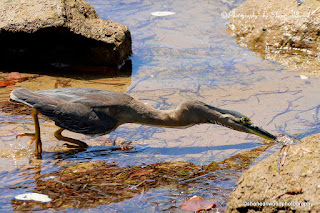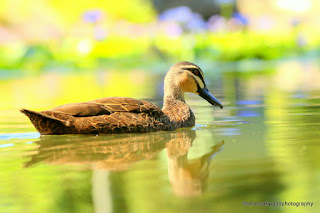Heron - Striated Heron

The Striated Heron is probably the least obtrusive of Australia’s herons. It lives quietly among the mangrove forests, mudflats and oyster-beds of eastern, northern and north-western Australia, where it creeps about in the soft mud among the mangrove roots in search of prey such as fish, crabs and other marine invertebrates. When foraging, these herons usually adopt a hunched posture, with the head and neck drawn back into the bird’s body, while keeping the bill held horizontally, parallel to the surface of the mud. Description The Striated Heron is a small, squat water bird with short legs, a black crown and a small, drooping crest. There are two colour morphs (forms). The grey morph has a grey face, throat and neck streaked centrally with black, dark brown and white. The dark grey upperparts have a metallic green sheen and pink-brown to grey underparts. The wings are also green grey, with each feather outlined yellow. The eye is yellow outlined with dark grey, the bill is blac...









